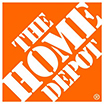Customizable Storage Solutions for Efficient Warehouse Racking Systems
Dec . 01, 2024 15:47
Understanding Custom Warehouse Racking Solutions
Warehouse efficiency is a crucial factor in the success of any distribution, manufacturing, or retail operation. A well-organized and optimized warehouse can significantly enhance productivity, reduce operational costs, and improve inventory management. One of the key components to achieving an effective warehouse layout is the integration of custom warehouse racking systems. This article delves into the benefits, types, and considerations of implementing custom racking solutions in your warehouse.
What is Custom Warehouse Racking?
Custom warehouse racking refers to tailored shelving and storage solutions designed to meet the specific needs of a warehouse operation. Unlike standard racking systems, which may not fully utilize the available space or accommodate unique inventory types, custom racking is engineered to fit the exact dimensions of the warehouse and the nature of the products stored. This bespoke approach allows businesses to maximize storage density, improve accessibility, and enhance workflow efficiency.
Benefits of Custom Warehouse Racking
1. Optimized Space Utilization One of the primary advantages of custom racking systems is the ability to utilize every inch of available space. Custom designs can leverage vertical storage, allowing warehouses to increase storage capacity without expanding their physical footprint. This is particularly beneficial in urban areas where real estate costs are high.
2. Improved Accessibility Custom racking can be designed to facilitate easier access to inventory. By understanding the flow of goods and how employees navigate the warehouse, businesses can create layouts that minimize the time taken to retrieve items, thereby speeding up order fulfillment processes.
3. Enhanced Safety Safety is paramount in any warehouse environment. Custom racking solutions can integrate safety features specific to the weight and type of goods stored, reducing the risk of accidents. For instance, adding safety straps, edge guards, or stabilizers can prevent collapses and ensure the safe storage of heavy items.
4. Increased Flexibility As businesses grow and change, so do their inventory and storage needs. Custom racking systems can be designed with modularity in mind, allowing easy adjustments or expansions as new products are introduced or as business demands evolve. This adaptability is key to maintaining warehouse efficiency.
5. Maximized Inventory Management Custom racking can be implemented alongside advanced inventory management systems. By designing racking that aligns with technology such as barcode scanning and real-time inventory tracking, businesses can improve accuracy and reduce losses due to misplaced items.
Types of Custom Warehouse Racking
There are several types of custom racking solutions available, each catering to different storage needs
custom warehouse racking

1. Selective Racking This is one of the most commonly used racking systems. It allows direct access to every pallet. Custom selective racking can be tailored to accommodate various pallet sizes and weights.
2. Drive-In Racking Suitable for high-density storage, drive-in racking allows forklifts to drive directly into the rack structure. Custom designs can optimize the depth and height of the racking to maximize storage capabilities.
3. Cantilever Racking Ideal for storing long, bulky items like timber or steel, cantilever racking features arms that extend outward, providing easy access and visibility. Custom designs can be tailored to suit the specific dimensions of the materials stored.
4. Flow Racking This system uses gravity to move products from one end of the rack to the other, often used for FIFO (first in, first out) inventory management. Customization can ensure that the flow system matches the item sizes and weights.
Considerations for Custom Racking Design
When investing in custom warehouse racking solutions, several factors should be considered
1. Load Capacity Understanding the weight and type of items to be stored is crucial. Racking must be designed to withstand the demands of the inventory without compromising safety.
2. Warehouse Layout A thorough analysis of the warehouse's layout, including aisle space and workflow, is essential to create an efficient racking system that supports operational needs.
3. Future Growth Businesses should anticipate future growth when designing racking systems. Scalability should be a key consideration to avoid the need for a complete overhaul in the near future.
4. Compliance and Safety Adhering to local regulations and safety standards is critical. Consulting with experts ensures that custom racking designs meet all necessary guidelines.
Conclusion
In today's fast-paced and competitive market, effective warehouse management is more important than ever. Custom warehouse racking systems offer a tailored approach to storage that can drastically improve operational efficiency, safety, and flexibility. By investing in custom solutions, businesses can ensure they are well-equipped to handle their unique inventory needs while setting themselves up for long-term success.




















